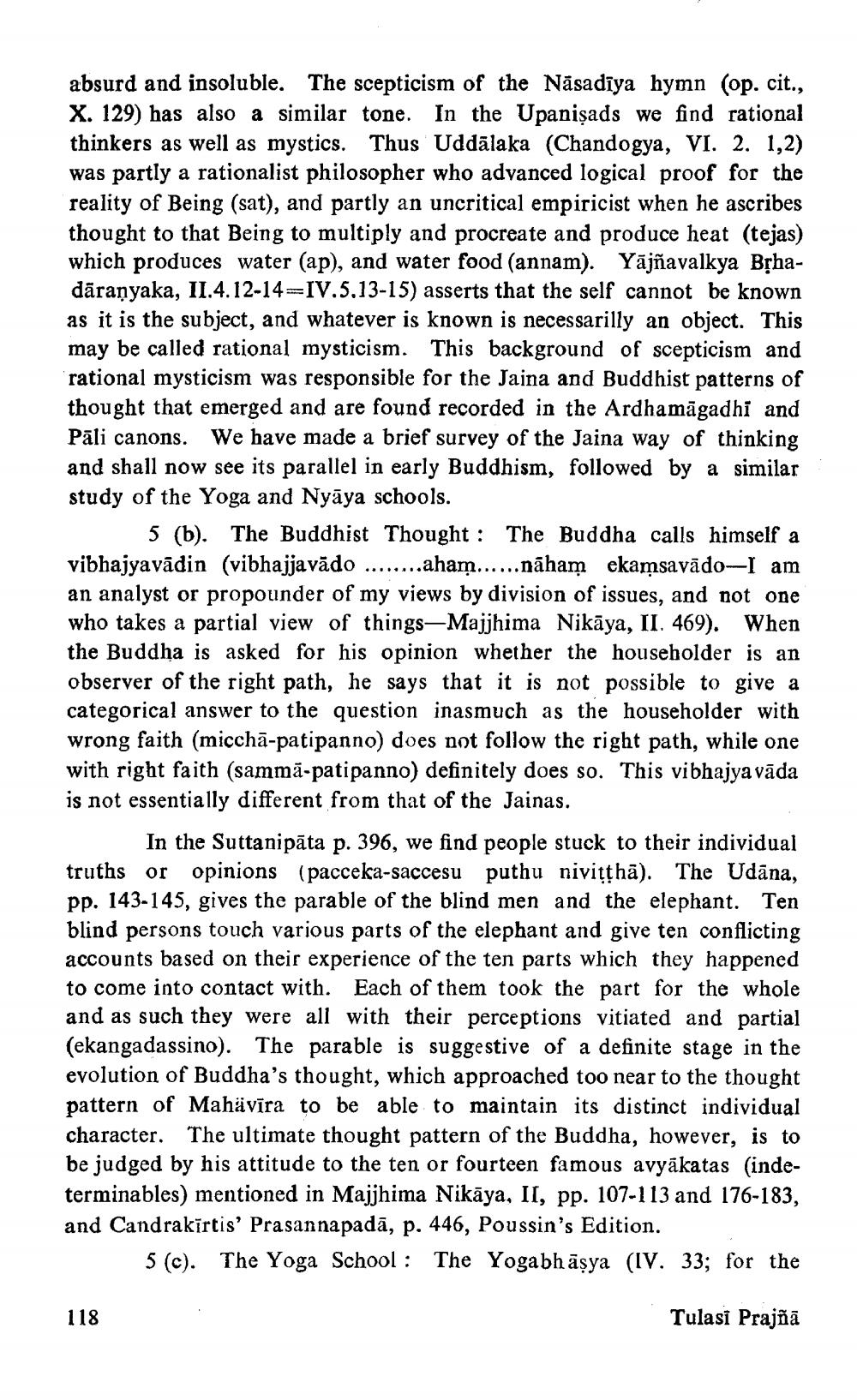________________
absurd and insoluble. The scepticism of the Nasadīya hymn (op. cit., X. 129) has also a similar tone. In the Upanisads we find rational thinkers as well as mystics. Thus Uddālaka (Chandogya, VI. 2. 1,2) was partly a rationalist philosopher who advanced logical proof for the reality of Being (sat), and partly an uncritical empiricist when he ascribes thought to that Being to multiply and procreate and produce heat (tejas) which produces water (ap), and water food (annam). Yājñavalkya Bṛhadāraṇyaka, II.4.12-14-IV.5.13-15) asserts that the self cannot be known as it is the subject, and whatever is known is necessarilly an object. This may be called rational mysticism. This background of scepticism and rational mysticism was responsible for the Jaina and Buddhist patterns of thought that emerged and are found recorded in the Ardhamāgadhi and Pāli canons. We have made a brief survey of the Jaina way of thinking and shall now see its parallel in early Buddhism, followed by a similar study of the Yoga and Nyāya schools.
5 (b). The Buddhist Thought: The Buddha calls himself a vibhajyavādin (vibhajjavādo ........aham......nāham ekamsavādo-I am an analyst or propounder of my views by division of issues, and not one who takes a partial view of things-Majjhima Nikaya, II. 469). When the Buddha is asked for his opinion whether the householder is an observer of the right path, he says that it is not possible to give a categorical answer to the question inasmuch as the householder with wrong faith (miccha-patipanno) does not follow the right path, while one with right faith (sammã-patipanno) definitely does so. This vibhajya vāda is not essentially different from that of the Jainas.
In the Suttanipata p. 396, we find people stuck to their individual truths or opinions (pacceka-saccesu puthu niviṭṭhā). The Udana, pp. 143-145, gives the parable of the blind men and the elephant. Ten blind persons touch various parts of the elephant and give ten conflicting accounts based on their experience of the ten parts which they happened to come into contact with. Each of them took the part for the whole and as such they were all with their perceptions vitiated and partial (ekangadassino). The parable is suggestive of a definite stage in the evolution of Buddha's thought, which approached too near to the thought pattern of Mahävīra to be able to maintain its distinct individual character. The ultimate thought pattern of the Buddha, however, is to be judged by his attitude to the ten or fourteen famous avyākatas (indeterminables) mentioned in Majjhima Nikāya, II, pp. 107-113 and 176-183, and Candrakīrtis' Prasannapadā, p. 446, Poussin's Edition.
5 (c). The Yoga School: The Yogabhāṣya (IV. 33; for the
Tulasi Prajñā
118




